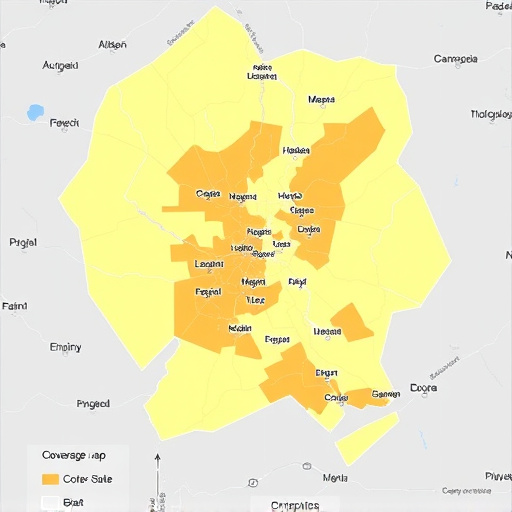In automotive engineering, heat soak is a critical issue, especially for high-performance vehicles. Cold Air Intake (CAI) systems draw cool external air for optimal efficiency during high-performance scenarios, while Short Ram Intake (SRI) bypasses the filter, using warmer engine compartment air, enhancing responsiveness but worsening heat soak issues. Understanding these differences is vital when selecting cooling strategies to ensure peak performance under extreme conditions, affecting both engine performance and reliability. CAI maintains cooler intake air, while SRI can lead to increased heat soak vulnerabilities.
In the realm of automotive engineering, understanding heat soak vulnerability is paramount for ensuring optimal engine performance and efficiency. This article delves into the intricacies of heat soak—a significant challenge in automotive systems, particularly with varying climates and driving conditions. We explore its impact on engine health, focusing on key aspects like air intake systems. The comparison between traditional cold air intake (CAI) and short ram intake (SRI) highlights their cooling capabilities and vulnerabilities to heat soak. Additionally, we present effective strategies for mitigating this issue, including material choices, design innovations, and advanced cooling technologies.
- Understanding Heat Soak Vulnerability
- – Definition and significance in automotive systems
- – How heat soak impacts engine performance
Understanding Heat Soak Vulnerability

Heat soak vulnerability is a critical consideration in automotive engineering, particularly when discussing cooling systems and engine performance. This phenomenon occurs when an engine operates under high temperatures for extended periods, leading to a degradation in its overall efficiency. In the context of cold air intake (CAI) versus short ram intake (SRI), understanding heat soak becomes even more intricate.
A CAI system draws cool air from outside the vehicle, often through a filter, to provide a constant stream of frigid oxygen to the engine. This design helps maintain optimal temperatures during high-performance scenarios. Conversely, SRI systems bypass the air filter and route intake air directly from the engine compartment, typically resulting in warmer air entering the combustion chamber. While SRI offers enhanced responsiveness, it can exacerbate heat soak issues due to the higher intake temperature. This difference highlights the importance of considering cooling strategies and their impact on overall system performance, especially under extreme conditions.
– Definition and significance in automotive systems

In automotive engineering, heat soak refers to the phenomenon where components, after being energized, retain excess heat even after power is cut off. This can lead to performance issues and increased wear, especially in high-performance vehicles. The vulnerability to heat soak varies across different engine systems, with significant implications for overall vehicle efficiency and reliability.
One key aspect that influences heat soak is the intake system design—a critical component in automotive engines. Comparatively, a cold air intake (CAI) allows for cooler air entry into the engine, reducing heat soak by minimizing temperature rise during operation. In contrast, a short ram intake (SRI), though often focused on enhancing airflow, may not significantly address heat transfer, potentially exacerbating heat soak vulnerabilities, particularly under heavy load conditions. Understanding these differences is crucial for automotive engineers aiming to optimize engine performance and mitigate the impact of heat soak in modern vehicles.
– How heat soak impacts engine performance

Heat soak, a common issue in automotive engineering, significantly influences engine performance, particularly under high-temperature conditions. When an engine operates for extended periods, especially during sustained acceleration or in hot climates, the internal components can experience elevated temperatures. This leads to a decrease in engine efficiency and power output due to reduced combustion chamber cooling.
In the context of cold air intake (CAI) versus short ram intake (SRI), these systems play a crucial role in mitigating heat soak effects. CAI systems draw in cooler, denser air from outside the vehicle, providing a constant supply of fresh air to the engine. On the other hand, SRI systems reuse the air within the engine’s exhaust system, offering reduced backpressure but potentially subjecting the intake air to higher temperatures. The choice between these intake types can impact how effectively an engine manages heat soak, ultimately affecting its performance and longevity in varying environmental conditions.
In understanding heat soak vulnerability, particularly within automotive systems, the distinction between cold air intake (CAI) and short ram intake (SRI) becomes crucial. While both aim to enhance performance, SRI’s direct route to the engine can exacerbate heat soak issues, impacting efficiency and output. CAI’s more cool-air approach offers a strategic advantage by mitigating these effects, ensuring engines maintain optimal temperatures for sustained performance. Thus, when considering modifications, the choice between CAI and SRI should factor in the critical balance between cooling benefits and potential heat soak vulnerabilities.














